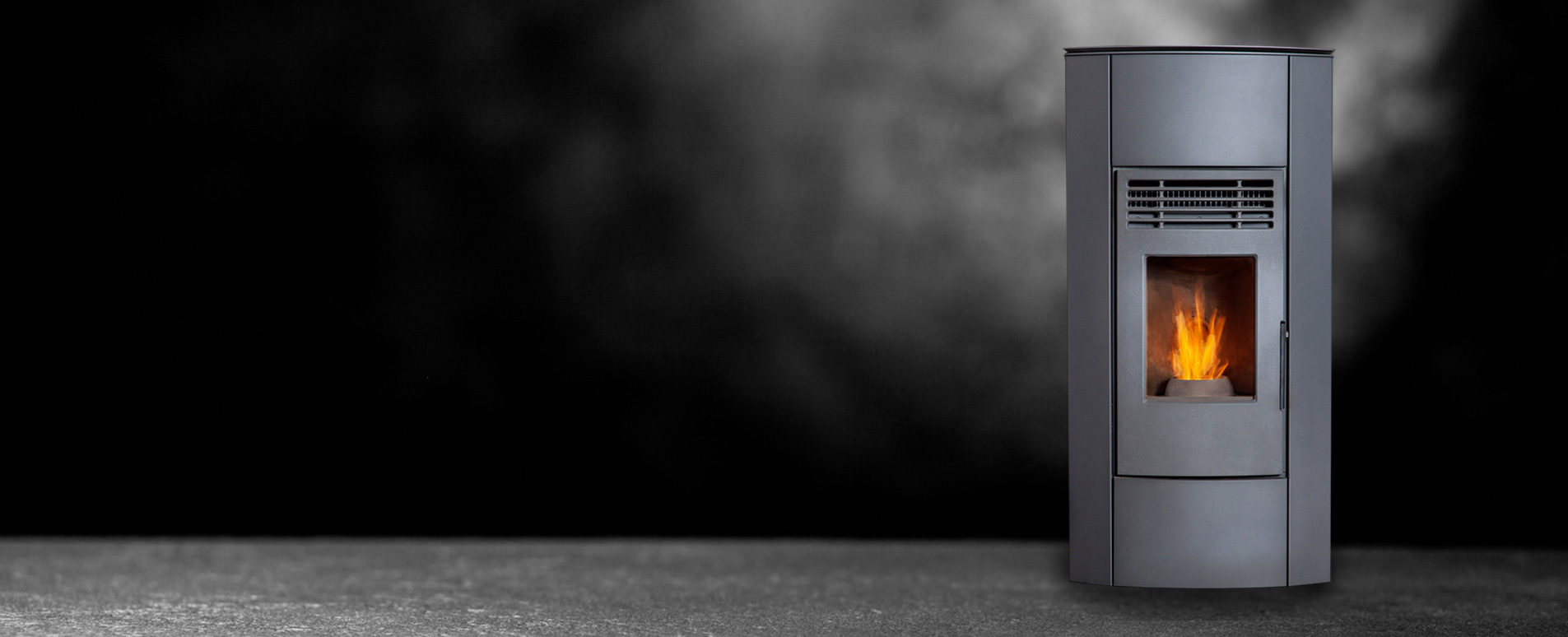
What is a pellet stove?
Do you know about pellet stoves? There are great alternatives to traditional wood stoves! To asses whether this type of stoves is right for you, here’s a small guide to help you understand their function and use.
Pellet stoves are extremely efficient and a wonderful heat source. They boast a high-energy efficiency, which can be explained by their low heat loss quotient and by the affordability of pellets.
Pellet stoves are calibrated by a thermostat, which regulates heat flow as well as burning duration, providing a constant source of heat. As a result, you don’t need to supervise or feed the fire for several hours. As such, a pellet stove can emit heat for up to 10 hours!
Ideally, a pellet stove is installed in smaller spaces, as its heating capacity is better suited for quainter rooms, rather than wide, open spaces.
A pellet stove is generally more expensive than a wood stove. However, a pellet stove’s chimney is usually cheaper than a wood stove one. All in all, the total cost is thus the same for both heat sources.
How does it work?
Pellet stoves operate in a very simple manner. Once the pellets have been deposited into the hopper, the stove is ignited through thermostatic control. Then, the auger system brings the pellet into the combustion chamber. A fan pushes the heat throughout the house as another blows the combustion gases outside. Ashes must be collected from the firebox with every new pellet loading and chimney maintenance must be done by a certified chimney sweep at least once a year.
Unfortunately, pellet stoves’ internal components tend to break or become inefficient as years go by. To prolong your pellet stove’s lifetime, you will need to keep excellent maintenance and replace some pieces as needs arise.
Pellet stoves are equipped with several motors to insure their proper functioning. Even though some higher-end models may feature more silent internal components, pellet stoves are still noisier than other types of stoves.
Benefits
-
Autonomy
Once the pellets have been deposited into the hopper, the stove can autonomously work for many hours without monitoring or feeding the fire.
-
Constant heat
Heat control is done through thermostatic control which adjusts the amount of pellets going through the combustion chamber to increase or decrease fire intensity.
-
Maximisation of BTU/weight of fuel consumed
Pellet stoves generate 90% higher returns, thus reducing heat losses.
-
Low running cost and low pellet cost
A 40lb pellet bag costs on average $5 et will provide you with about 40 000 BTU of heat, which makes this particularly interesting considering that the stove is not functioning at full capacity at all times. However, pellet cost is more expensive than wood, natural gas or propane. Nonetheless, it is lower than electricity or oil.
-
No CO2 emission
It’s a heating source with no environmental footprint!
-
Ease of use
Ignition and operation are done automatically. The only task required is the handling and loading of the pellets.
-
No smoke migration or wood burning smell
A fan and a sensor for air returns insure that gases are properly evacuated.
Disadvantages
-
Noise pollution
A pellet stove can be quite noisy. Luckily some higher-end models have been designed to reduce considerably noise pollution; nevertheless pellet loading comes with its fair share of auditory disturbances.
-
Short lifespan
Due to their many technical internal components, a lot of pellet stoves do not have a long lifespans – at least not keeping proper maintenance and replacing internal components as need be.
-
Visual aspect of the flame
The flame in a pellet stove is often more subdued and less visually attractive than those in different kinds of stoves – especially when the stove is in continuous use. Indeed, the thermostatic control of the stove keeps combustion high enough to regulate heat in the room but in turn this reduces greatly the intensity of the flame.
-
Creosote build-up
If temperature setting is always low, the stove will experience creosote build-up. It is thus necessary to set the stove at maximum combustion for at least an hour regularly to reduce the risk of creosote build-up.
-
Chimney clean up and a more complex gas evacuation
The chimney and the evacuation vents are sealed at every joint to insure no gas escapes. However when cleaning the chimney, this can cause certain parts to come undone. If installation hasn’t been thoroughly thought out to facilitate clean up, some changes may be required.
-
Dust build-up inside
Outside evacuation is normally positioned under the roof, which in turn increases dust and combustion smoke build-up on patios, soffits, windows and other neighbouring elements.
-
Higher maintenance cost
Since maintenance of smoke evacuation is more complex than that of a regular chimney, maintenance costs are usually higher.
-
Air vent requirement
On top of smoke evacuation vent, an air vent might be required or strongly recommended.
If you’re considering purchasing a pellet stove, note that many models stand out thanks to their build quality, their internal components and their design. Don’t hesitate to contact us for advice!

